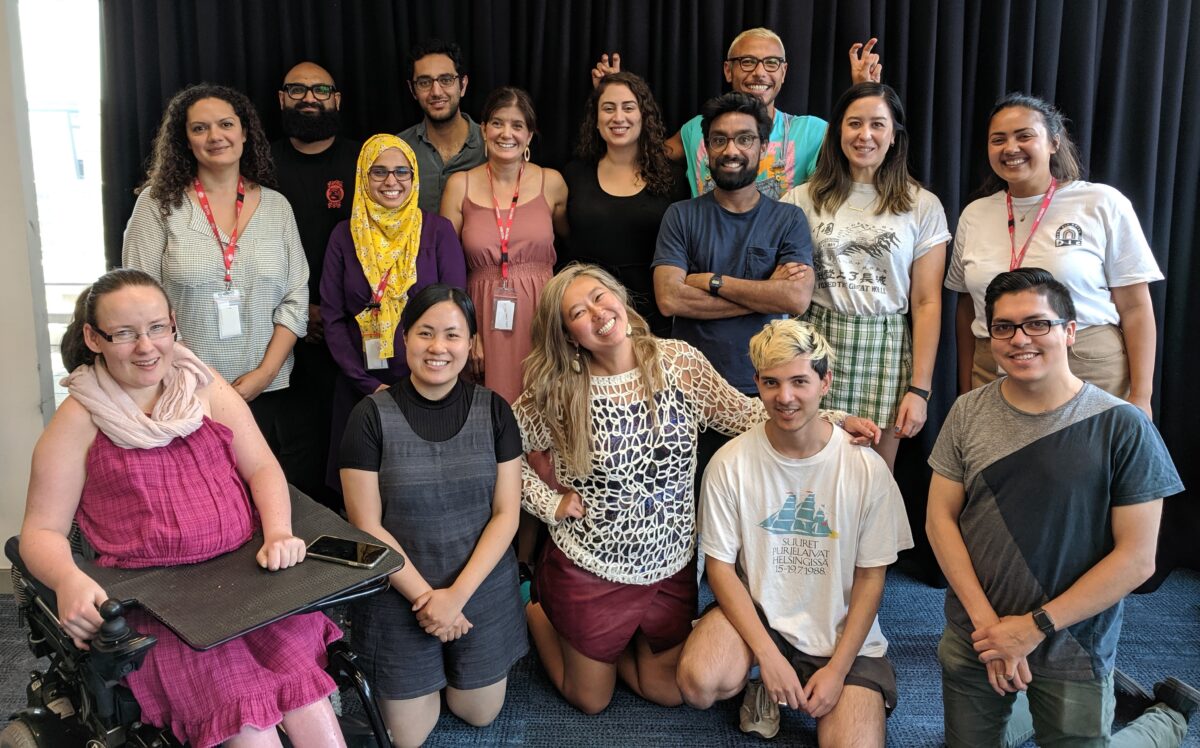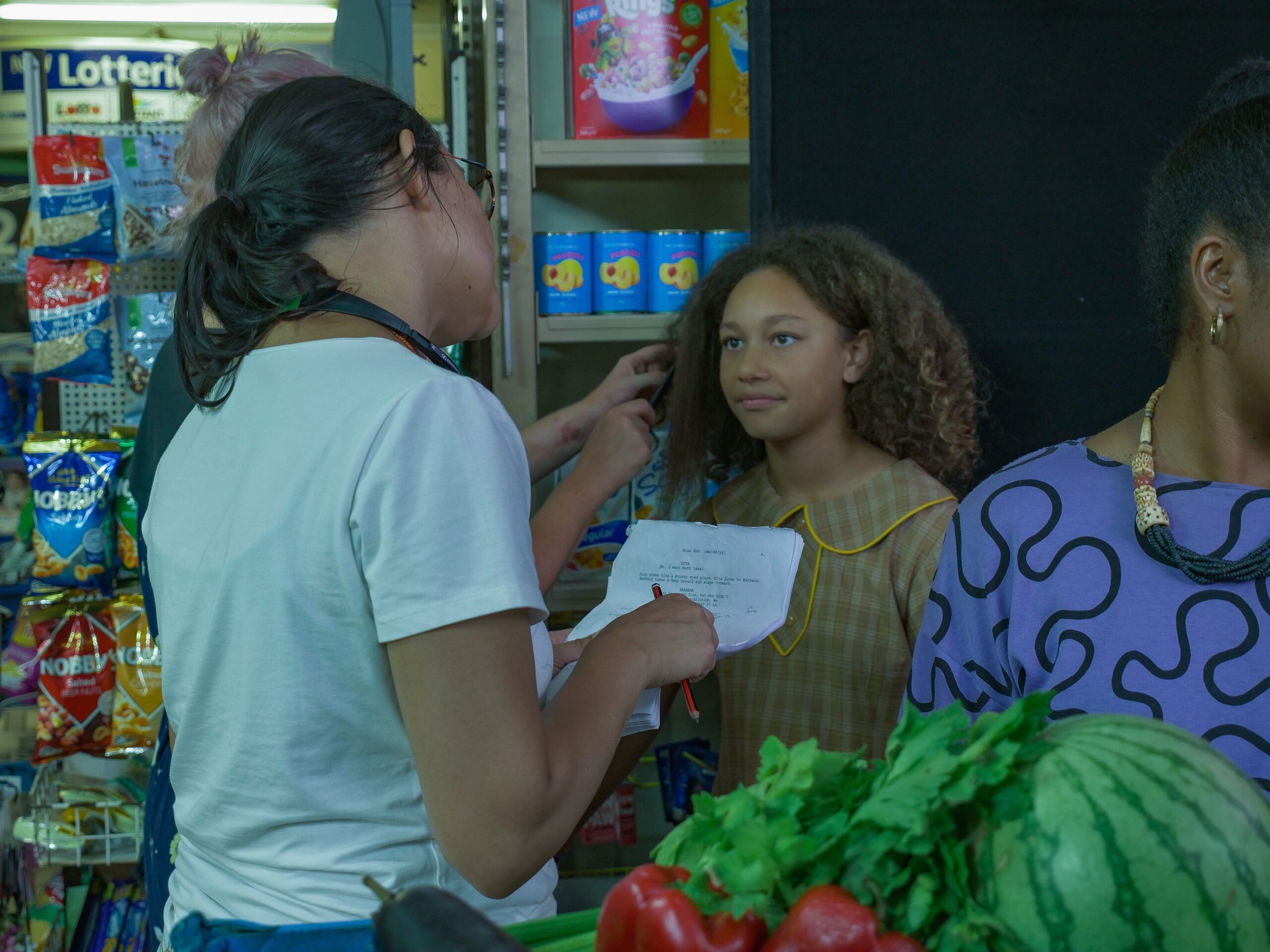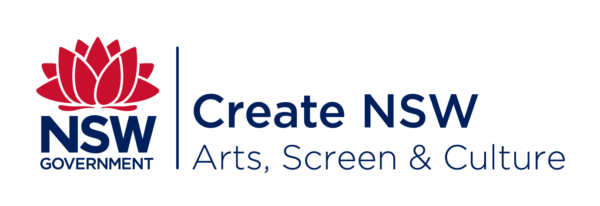
Making Safe Spaces for Diverse Creatives
Australian Film, Television & Radio School’s Talent Camp
Monique Choy
Sometimes telling your story can expose the most raw and vulnerable parts of yourself – so having a safe space to do so is essential. Talent Camp works with emerging creatives from diverse communities, including First Nations, LGBTQI+ communities, people of colour and people with disability. Their stories are timely and compelling, but telling them can bring up experiences of discrimination, injustice and trauma.
Key Takeaways
The program designers knew their first job was to build safe creative spaces. According to former Project Manager Gary Paramanathan, there are three key elements to doing this:
- Mental health first aid training Like physical first aid training, courses accredited through Mental Health First Aid Australia equip facilitators to deal with mental health issues. The program was developed in Australia and is now available in over 25 countries. According to Paramanathan, ‘you learn things around how to manage when someone is clearly exhibiting anxiety’.
- Quiet space Places where people can take a break from the group and re-centre. ‘Have a second space where they can physically remove themselves and just have some time out.’
- Group agreement A shared agreement underlining the values of the group and the idea that ‘we hold each other accountable and responsible,’ says Paramanathan. ‘It creates a level of safety, people know that they can speak, or choose to pass, and they will not be judged for it.’ With an agreement in place, facilitators can also be proactive in respectfully holding participants to account.
The more rejections I accumulated, the closer I was to walking away. I was this close to abandoning the whole thing, if it wasn’t for Talent Camp
Introduction to Talent Camp
Talent Camp is an AFTRS filmmaking initiative for diverse and under-represented communities. In the first program, launched in 2017, 99 emerging creatives from every state and territory participated in week-long workshops held around the country. From this group, 16 were selected for the national program and from these, three were selected to receive production funding and mentoring.
One of the three was Papua New Guinean/Australian multidisciplinary artist Alana Hicks, whose short film Chicken was produced through the Talent Camp program. It won Flickerfest’s Best Direction award in 2020, has been nominated for an AACTA award and screened at the 64th BFI London Film Festival.

But before being accepted into the Talent Camp program Hicks had almost given up. ‘The more rejections I accumulated, the closer I was to walking away. I was this close to abandoning the whole thing, if it wasn’t for Talent Camp,’ she says. She had set herself a strict regime of submitting three applications per month, but Talent Camp was her only break. ‘That’s a minimum, three dozen applications that I would have done. And Talent Camp was the only one that I got. And oh, my god did it crack everything open.’
In 2020 she won first prize in the SBS Emerging Writers Competition. She has recently completed her first directing project for TV and is now developing an original series concept about growing up mixed-race in Australia.
Hicks says many excellent Australian stories are simply not making it into the mainstream via traditional channels, often due to the insular nature of the industry. For Talent Camp’s 2017 Project Manager, Gary Paramanathan, creatives sometimes also need extra support in the crafting stage. ‘Because there’s so much negative perception about who we are in society, our immediate urge is to correct it – to create positive stories – but we risk in that process, writing angelic, perfect creatures,’ says Paramanathan, who identifies as a person of colour and as queer. Instead, the workshops were aimed at ‘supporting their craft, but teaching them some basics around how to tell a compelling story.’
Mental Health First Aid
Often, this process required the storytellers to dig deep into painful experiences. The program needed to be trauma-informed and draw on community arts and cultural development principles.
According to Paramanathan, ‘You’re bringing together people from all walks of life, that have different levels of lived experience of trauma, and ability to communicate that trauma. We’re really mindful of that. So for example, we got all the tutors into mental health first aid.’ This training equipped tutors with the skills to manage situations causing anxiety or distress, and the tools to deal with it.
Active Intervention
The program took a pro-active approach toward creating cultural safety.
Paramanathan made sure he was in the workshop rooms as the program brought together participants from very different backgrounds and life experiences. ‘I continually created this idea of cultural safety, so that they felt like they were in a good environment,’ he says, describing how he would pause the workshop if there were signs of discomfort from any of the participants.
Quiet Space
Another key component was offering space away from the group. ‘At each workshop, we had a quiet space. And we told them anytime you want to disengage, go sit, have some quiet space, you can use it,’ says Parmanathan. The space was described as a quiet space, or writing space, rather than a time-out space, to normalise using it rather than highlighting anyone’s anxiety.
Group Agreement
Each workshop began with a group agreement that explicitly covered respect, accountability and the right not to participate, along with how to handle issues like suicide, sexual assault and trauma. These uncomfortable subjects often live close to the creative impulse, especially for marginalised communities. ‘The weight of that is what often drives us to become storytellers. So we really wanted to manage those things,’ says Paramanathan. ‘It can be very triggering for some people.’
Ongoing Success
Originally conceived by Christina Alvarez, then AFTRS’s director of partnerships and development, the 2017 program was supported by AWG & Scripted Ink, Screen Australia, Screen Queensland, Screen NSW, Film Victoria, Screen Tasmania, South Australian Film Corporation, ScreenWest, Screen Territory and Screen Canberra. The biennial program will feature narrative and documentary streams in 2022.
Another Talent Camp web series, Girl, Interpreted, by Grace Feng Fang Juan and Nikki Tran, was picked up by streaming platforms Tencent Video and iQiyi for online distribution in China.
This case study was supported by Create NSW

Monique Choy Consultant
Writer, editor, researcher and all-round geek, Monique has worked as a web publisher for the Australian Broadcasting Corporation, a communications officer for the United Nations Development Programme in Sri Lanka and the Maldives and as a children’s fiction writer for Hinkler Books. She is an author of six Lonely Planet travel guidebooks, the interactive fiction The Last Laugh and has worked with dozens of other organisations, including Information Cultural Exchange, the Arab Film Festival Australia, the Australian Museum and the University of Western Sydney.
With a mixed heritage of Hong Kong Chinese and Anglo cultures, Monique is excited by the potential of the arts to sharpen our understanding of our glorious diverse culture and to draw on it to create something truly new and truly Australian.
What is the Imagine Project?
We’re publishing case studies and documenting Australia’s best work in advancing cultural diversity and racial equity and inclusion in the arts through the Imagine Australia Project, managed by Diversity Arts Australia (DARTS) and funded via the Australia Council’s Re-Imagine project and supported by Creative Equity Toolkit partner, British Council Australia. To find out more click below – or read the other case studies as they go live here.

